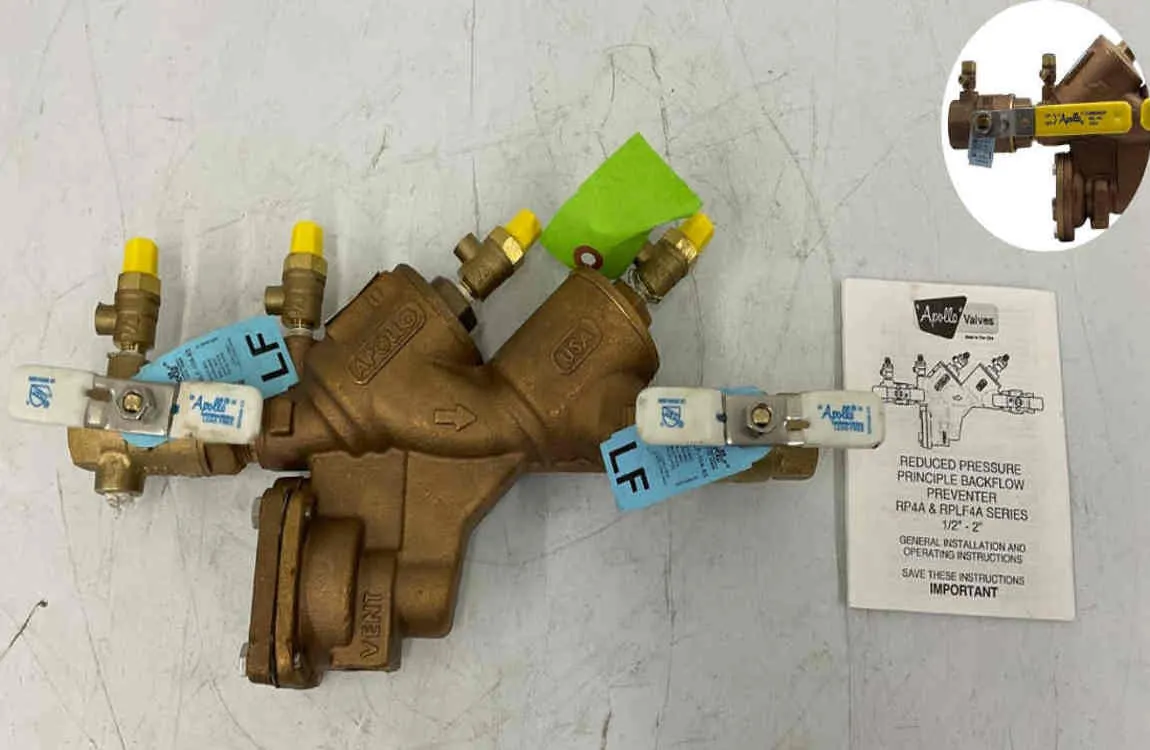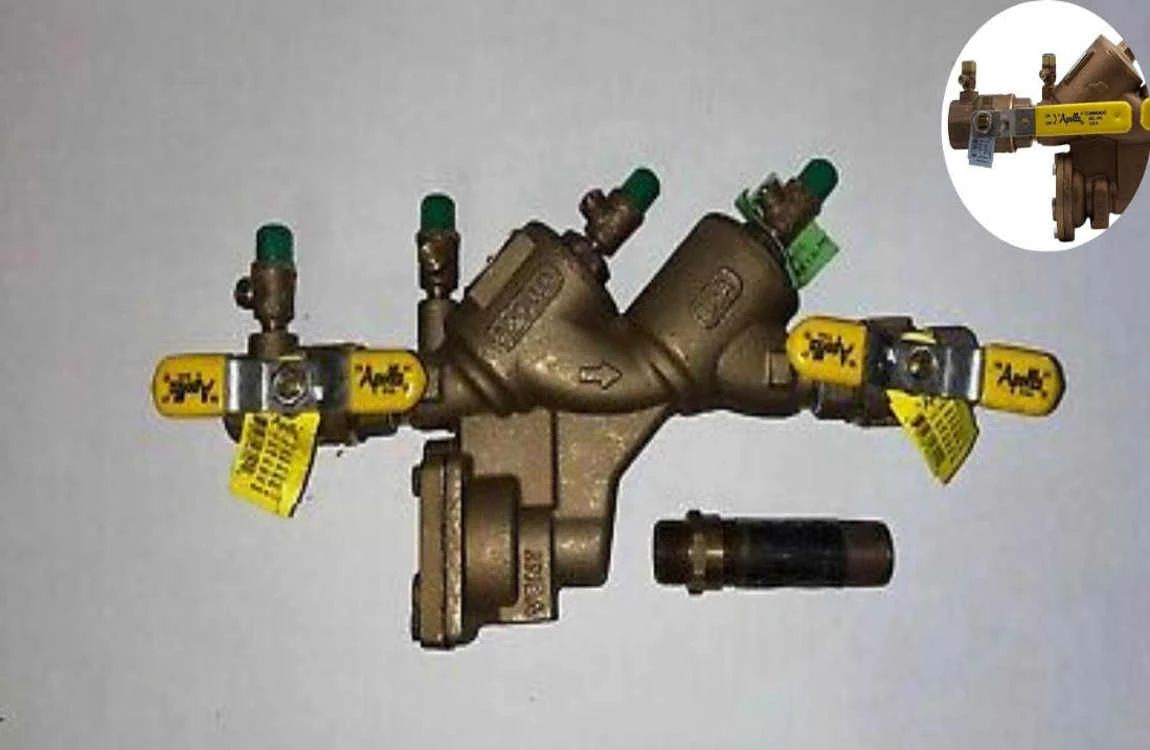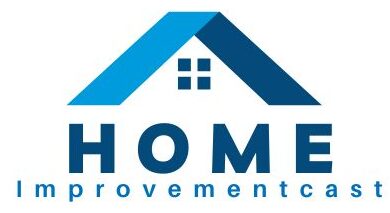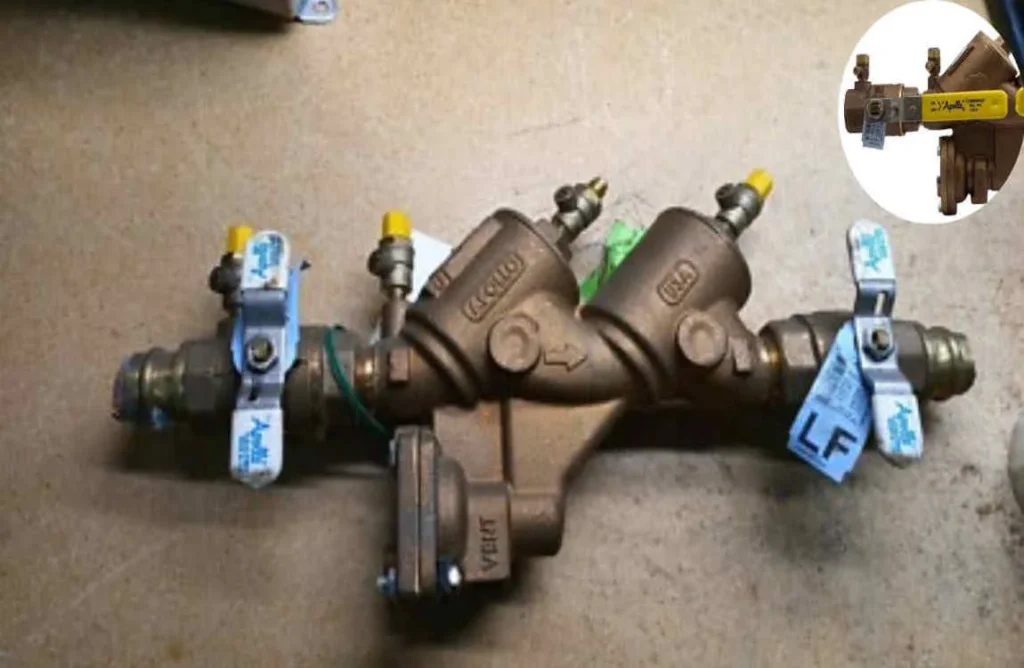Home plumbing systems are intricate networks designed to deliver safe and clean water while efficiently removing wastewater. Yet, behind the scenes, some risks can compromise the safety of your water supply. One such risk is backflow contamination, a potentially hazardous situation that occurs when water flows in reverse, carrying contaminants into your clean water supply.
To safeguard against these risks, certain plumbing devices are essential. One such device is the RPZ valve, a critical component in protecting your home’s water supply.
What is an RPZ in Home Plumbing?

Definition of RPZ
An RPZ (Reduced Pressure Zone) valve is a specialized backflow prevention device designed to protect your potable water supply from contamination. It ensures that water within your plumbing system flows in one direction, preventing potentially harmful substances from entering the clean water supply.
How RPZ Valves Work
An RPZ valve consists of two independent check valves and a reduced pressure zone in between. These components work together to monitor and control water pressure. If a drop in pressure occurs, the valve releases water through the reduced pressure zone, preventing backflow. This mechanism ensures that contaminated water cannot flow back into the clean water supply.
Other Names and Standards
RPZ valves are also known by various names, including:
- RPZD (Reduced Pressure Zone Device)
- RPZA (Reduced Pressure Zone Assembly)
- RPPA (Reduced Pressure Principle Assembly)
These names refer to the same function: protecting water systems from contamination by maintaining unidirectional flow.
RPZ vs. Other Backflow Preventers
While RPZ valves are an advanced form of backflow prevention, they differ from other devices, such as double-check valves or non-testable backflow preventers. Unlike simpler devices, RPZ valves are more reliable for high-risk systems, as they actively release water during pressure drops, ensuring no contaminants seep back into the clean water.
Why is an RPZ Important in Home Plumbing?
You may also read (a guide to selecting glue for home hot tub repairs).
Risks of Backflow Contamination
Backflow occurs when water flows in the opposite direction due to pressure changes, often caused by:
- A sudden drop in water main pressure (e.g., during a pipe burst).
- Increased pressure in your home’s system (e.g., from irrigation systems or boilers).
When backflow happens, contaminants from external sources—such as fertilizers, pesticides, or bacteria—can enter your clean water system, posing severe health risks.
Common Contaminants Prevented by RPZ Valves
RPZ valves block contaminants like:
- Chemicals from lawn irrigation systems (fertilizers, pesticides).
- Bacteria and microorganisms from standing water.
- Sediments or debris during pipe repairs or maintenance.
By preventing backflow, RPZ valves act as a safeguard, ensuring your drinking water remains safe and uncontaminated.
High-Risk Plumbing Systems
Certain plumbing systems are more prone to backflow risks, including:
- Irrigation Systems: Sprinklers and drip systems often connect to external water sources, increasing the risk of contamination.
- Boilers: High-pressure systems can create reverse flows, especially during power outages.
- Fire Suppression Systems: These systems often contain stagnant water that, if backflow occurs, can contaminate your clean water supply.
Where and When is an RPZ Installed in a Home?
Typical Installation Locations
RPZ valves are typically installed in areas where there’s a high risk of backflow contamination. Common locations include:
- Near irrigation system connections.
- At boiler system inlets.
- In fire suppression system pipelines.
The exact placement depends on your home’s plumbing setup and the local water authority’s requirements.
Scenarios Requiring RPZ Installation
You might need an RPZ valve if your home has:
- Lawn Irrigation Systems: These systems often use fertilizers and chemicals that can contaminate your water supply.
- Large Boilers: Boilers can create pressure imbalances that lead to backflow.
- Fire Suppression Systems: Often filled with stagnant water, these systems pose a risk of contamination.
Legal and Regulatory Requirements
In many areas, local or state plumbing codes mandate RPZ installation for homes with high-risk systems. For example, the Illinois State Plumbing Code requires RPZ valves for irrigation systems to protect against backflow contamination. Always check your local regulations to ensure compliance with the law.
How Does an RPZ Valve Work?

Mechanism of the RPZ Valve
The RPZ valve consists of three main components:
- Two Check Valves: These ensure that water flows in only one direction.
- Reduced Pressure Zone: This intermediate section releases water if pressure drops, preventing backflow.
- Relief Valve: Opens to release water when pressure imbalances occur.
When water pressure drops unexpectedly, the RPZ valve’s relief mechanism activates, preventing contaminated water from reversing into your clean water system.
Visual Representation
You may also read (how to locate leaks in home pool plumbing).
Here’s a simplified table explaining the RPZ valve’s components and their roles:
ComponentFunction
Check Valve 1 Stops water from flowing backward.
Reduced Pressure Zone: This creates a safe space for water release.
Relief Valve Discharges water during pressure drops.
Maintenance and Testing of RPZ Valves
Why Annual Testing is Necessary
RPZ valves are not “set it and forget it” devices. Over time, components can wear out, reducing their effectiveness. Annual testing ensures the valve operates correctly and complies with local regulations.
Who Can Test RPZ Valves?
Testing should be performed by licensed plumbers or certified backflow prevention specialists. These professionals have the tools and expertise to inspect, test, and repair RPZ valves as needed.
Overview of the Testing Process
During a test, the plumber will:
- Shut off the water supply.
- Attach testing equipment to the valve.
- Measure pressure levels and confirm the proper functioning of the check valves and relief valve.
- Submit a report to your local water authority for compliance.
Failure to maintain or test your RPZ valve can lead to fines, water supply disconnection, or worse—contaminated drinking water.
Signs You Might Need an RPZ in Your Home
If you’re unsure whether your home requires an RPZ valve, look for the following signs:
- You have a sprinkler or irrigation system installed.
- Your home uses a large boiler or water heater.
- Your water authority requires the installation of backflow prevention devices.
Consult a licensed plumber to assess your system and recommend the appropriate solution.
Benefits of Installing an RPZ Valve in Your Home
Investing in an RPZ valve comes with several benefits:
- Water Safety: Protects your family from harmful contaminants.
- Regulatory Compliance: Ensures your home meets local plumbing standards.
- Peace of Mind: Eliminates worries about backflow risks.
Common Misconceptions About RPZ Valves
“RPZ Valves Are Only for Commercial Use”
This is untrue. RPZ valves are equally vital in residential systems, especially for homes with irrigation or boiler systems.
“They Don’t Need Maintenance”
On the contrary, regular testing and maintenance are critical to ensure proper functioning and compliance.
How to Choose and Install an RPZ Valve
When selecting an RPZ valve, consider:
- The size of your plumbing system.
- The water pressure requirements.
- Local regulations require specific models.
Always hire a professional plumber for installation to avoid errors and ensure compliance with water authority standards.
You may also read (dont let a leak ruin your home repair tips).

